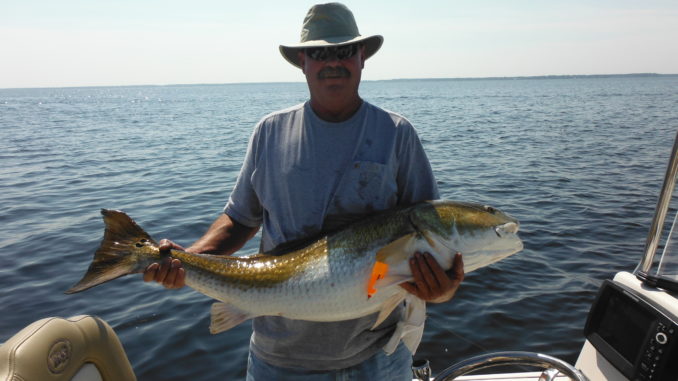
Popping corks have become a staple weapon for fishermen targeting old drum in the Pamlico Sound and its tributaries.
Most roads leading east across North Carolina will eventually end along the banks of the Pamlico Sound, an inland sea that separates the mainland from the Outer Banks. It’s in the waters of this pristine sound, 80 miles long and 30 miles wide, that the biggest specimens of red drum spend much of their time inshore.
Ranging from 25 to more than 60 pounds, these “old drum” have traditionally been targeted in the late summer and early fall around the mouth of the Neuse and Pamlico rivers by fishermen soaking large chunks of fresh mullet, croaker or menhaden on the bottom.
Thanks to a school of bluefish and a couple of neophyte anglers, that’s all changed.
Guide Gary Dubiel of Spec Fever Charters was trying to help a couple of less-than-experienced fishermen catch fish several years ago. He found a school of bluefish, and to make it easier, he tied on a popping cork rig with half of a speck rig trailing below. One woman made a cast, popped the cork one time, and the cork disappeared, but instead of it being a bluefish, it was a 40-inch red drum.
The bluefish were tearing through a large pod of menhaden, and apparently a school of old drum was feasting down below. Before the morning charter was over, the anglers had landed nearly a dozen big fish, all on the popping-cork rig.
“With all of that food available, why would they eat that small speck jig?” Dubiel wondered. “I figured it would have to be the noise. You are calling fish to the lure versus taking the lure to the fish.”
In the next few years, popping corks become the most-effective way to catch the big drum in the sound and the neighboring rivers. Dubiel estimates that 80 percent of all guides are using them in what is completely a catch-and-release fishery, since no fish longer than 27 inches can be kept.
It took Dubiel a year or so experimenting with different components to come up with what he considers the ideal popping cork rig, now being manufactured commercially as D.O.A.’s Deadly Combo Airhead. The cork is concave to produce noise, and the soft-plastic Airhead is shaped like a small menhaden.
“It is working so well down here that nearly 80 percent of all of local guiding fleet has switched to this method,” he says.
After several years of experimentation with lures, corks, and leader length, Dubiel perfected the ideal popping cork rig and is now commercially-made by D.O.A. Lures as the Deadly Combo Airhead. D.O.A.’s cork is concave on the top to emulate a 40-pound feeding fish and the D.O.A. Airhead is shaped and sized to look just like a small menhaden. The key is making plenty of noise to attract old drum.
“You need to make noise and lots of it. The more it sounds like feeding activity, the more they will come,” said Dubiel, who has had bait soaking on the bottom while he’s fishing with popping corks, and the popping corks will out-produce the bait.
Dubiel compares the popping cork rig to using a noisy topwater plug, but the success rate is much higher.
“The real aggressive fish will come up to eat a noisy topwater plug, but other fish will just come up and turn away from it,” he said. “All the fish will eat the cork rig when aggressive or not. They cannot stand the sight of the menhaden imitation dangling under the cork right where another fish just fed.”
Another advantage over traditional bait fishing is that the popping cork rig is successful for a longer period of time. Most fishermen come to fish on the spawning moons in August and September, but that pattern now starts earlier and lasts later.
“The vast majority of the spawning fish travel on the contours in 10 to 14 feet of water. Bait fisherman do real well along these breaks because the fish stay on that pattern during spawning season. The rest of the summer, the fish are on the bait in either 4 feet of water or 25 feet, and the popping cork rig is effective in any depth water,” he said.
Another guide who has fished the popping cork rig for old drum for several years is Dave Stewart of Knee Deep Custom Charters. He said the big schools of old drum will show up in the sound as soon as the big schools of menhaden arrive.
“In July and early August, the fish are in a prespawn mode, fattening up,” he said. “We key in on the big schools of menhaden just like we do when cobia fishing in the ocean.”
Knowing exactly where to find menhaden concentrations across the sound and its many tributaries can be difficult. Wind and rainfall are critical for Stewart to find them.
“When menhaden move into the sound, they will travel inland until they run out of salty water. Salinity is key for knowing how far inland they will travel,” he said, explaining that during periods of regular rainfall, menhaden and old drum will travel as far inland as Minnesott Beach. If rainfall amounts are high locally or upstream from New Bern it will move the bait and fish to the mouth of the river and into the sound.
Because tides along the western edge of the sound are wind-driven, a northeast wind will bring more fish up the river and is Stewart’s favorite to fish.
“The northeast wind is a blessing because it pushes in good, salty water from the eastern side of the sound up the Neuse and the Pamlico rivers,” he said.
In July and early August, fishermen should look for menhaden in July and early August in shallower areas adjacent to deep sloughs or a drop off.
“The bait will bring the drum into the shallows some, but don’t overlook the deep water, either. It is not just the presence of bait up on top. We have started finding fish by marking bait in deep water and fishing around that,” Stewart said.
Typically, the oyster rocks in the mouth of the Neuse and Pamlico, as well as the shoals, will have plenty of bait and old drum around in late July.
“The oyster rocks are real good during July and throughout the entire season. They oysters zone starts from Oriental and Adam’s Creek out to the sound,” said Stewart, who recommends anglers visit Garbacon Shoals, the mouth of Turnagain Bay and Gum Thicket.
DESTINATION INFORMATION
HOW TO GET THERE — Boat ramps that allow access to the Pamlico Sound’s drum waters are scattered across the region and can be located by visiting www.ncwildlife.org/Boating_Waterways/Boating_Maps_Locations.htm. Oriental’s Green Creek Landing provides good access to the mouth of the river and its tributaries in that area, including the South River and Turnagain bay. The South Creek and Smith Creek ramps in Aurora are good spots from which to access the Pamlico River.
WHEN TO GO — Fleets of old drum will migrate into the Pamlico Sound at the beginning of summer and stay until water temperatures drop in October. Mid-July through September is considered the best fishing.
TACKLE REQUIREMENTS — Popping cork rigs are made up of a brightly colored float with a concave face with a short wire passing through its center with several noise-making beads on either side of the float. A 20- to 24-inch leader of 50-pound monofilament or fluorocarbon is sufficient, tied to a 1/4-ounce jighead or swimbait hook onto which is threaded a 4- to 5-inch soft-plastic bait that mimics a small menhaden. As far as tackle, a 7-foot, medium-heavy spinning rod with a fast tip and stiff butt is required, mated with a 4000-5000 series reel spooled with 30- to 50-pound braid.
FISHING INFO/GUIDES — Capt. Dave Stewart, Knee Deep Custom Charters, 252-249-1786, www.pamlicotackle.com; Capt. George Beckwith, Down East Guide Service, 252-671-3474, www.downeastguideservice.com; Capt. Noah Lynk, Noah’s Ark Charters, 252-342-6911, www.noahsarkfishingcharters.com; Capt. Gary Dubiel, Spec Fever Guide Service, 252-249-1420, www.specfever.com; Minnesott Beach Bait & Tackle, 252-249-1786. See also Guides and Charters in Classifieds.
ACCOMMODATIONS — Pamlico Guide, www.pamlico.com; Washington Visitors Guide, www.littlewashington.com; Oriental Tourism board, www.townoforiental.com; N.C. Department of Travel and Tourism, www.visitnc.com.
MAPS — GMCO Maps Chartbook of North Carolina, 888- 420-6277, www.gmcomaps.com; Capt. Segull’s Nautical Charts, 888-473-4855, www.captainsegullcharts.com;The Salty Southeast Cruising Guide (www.cruisersnet.net/cruisersnet-marine-map/?ll=35.5593,-76.4663&z=14); N.C.’s Coastal Boating Guide (www.ncwildlife.org/Boating_Waterways/documents/NCCoastaBoatingGuideMap.pdf).

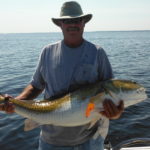
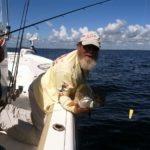
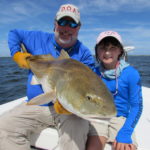
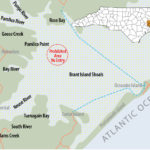



Be the first to comment